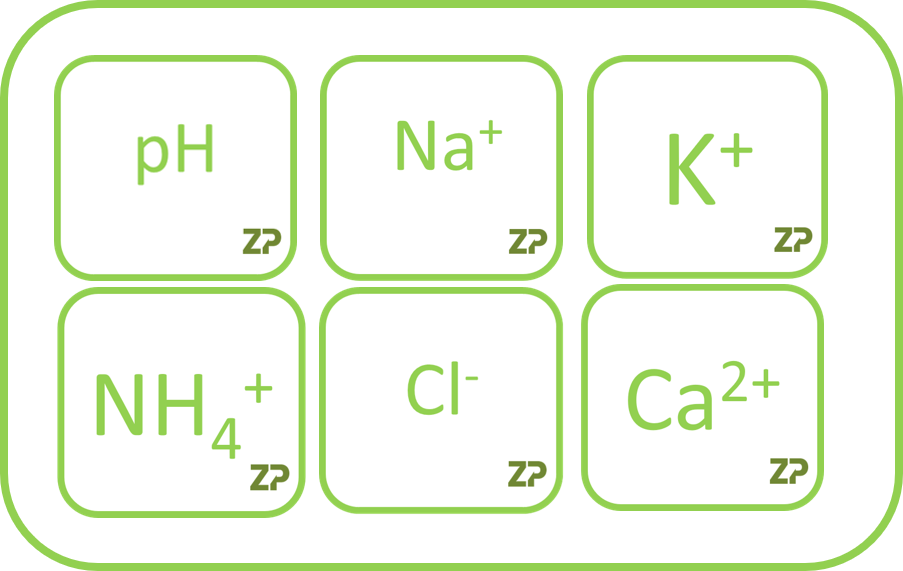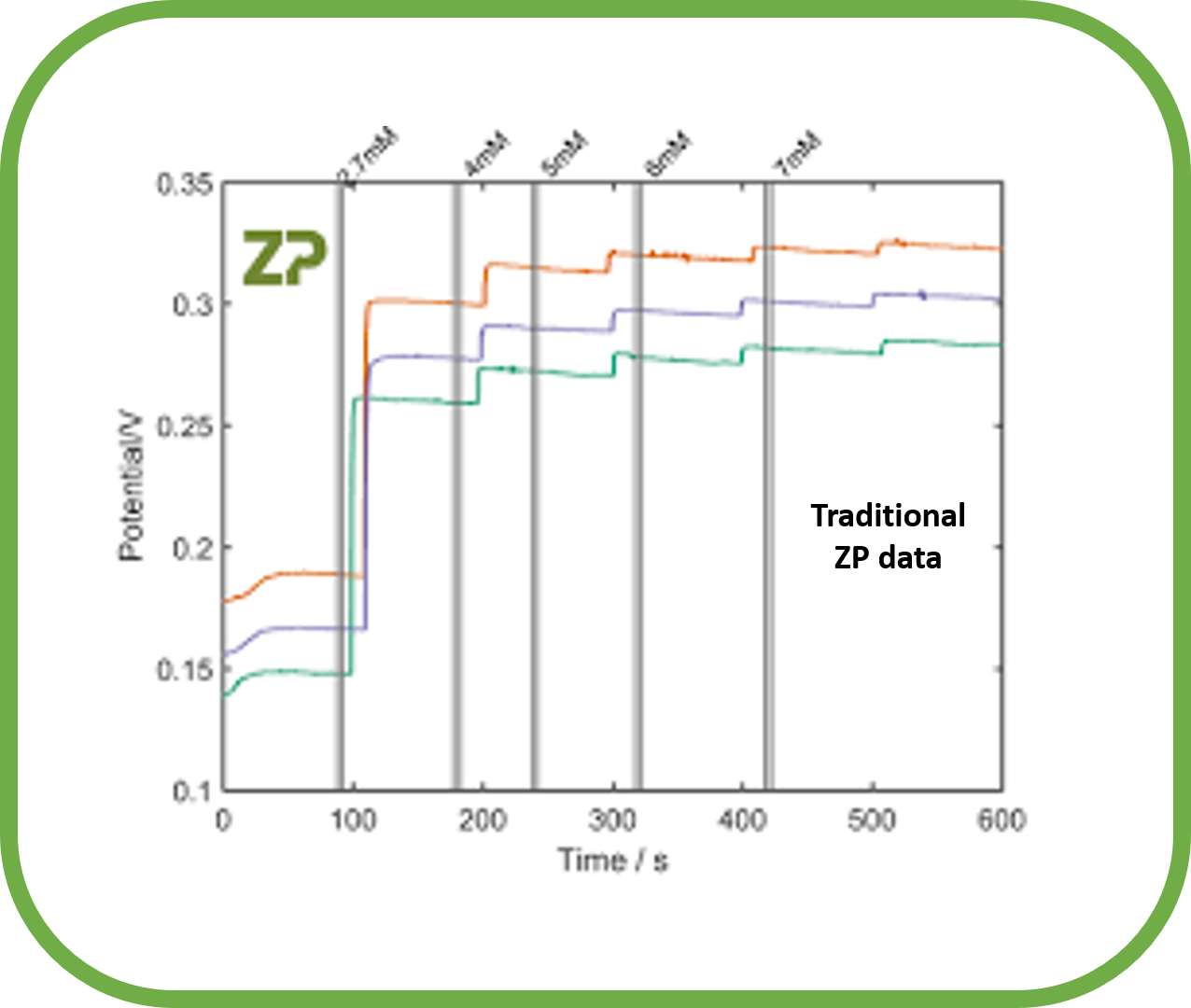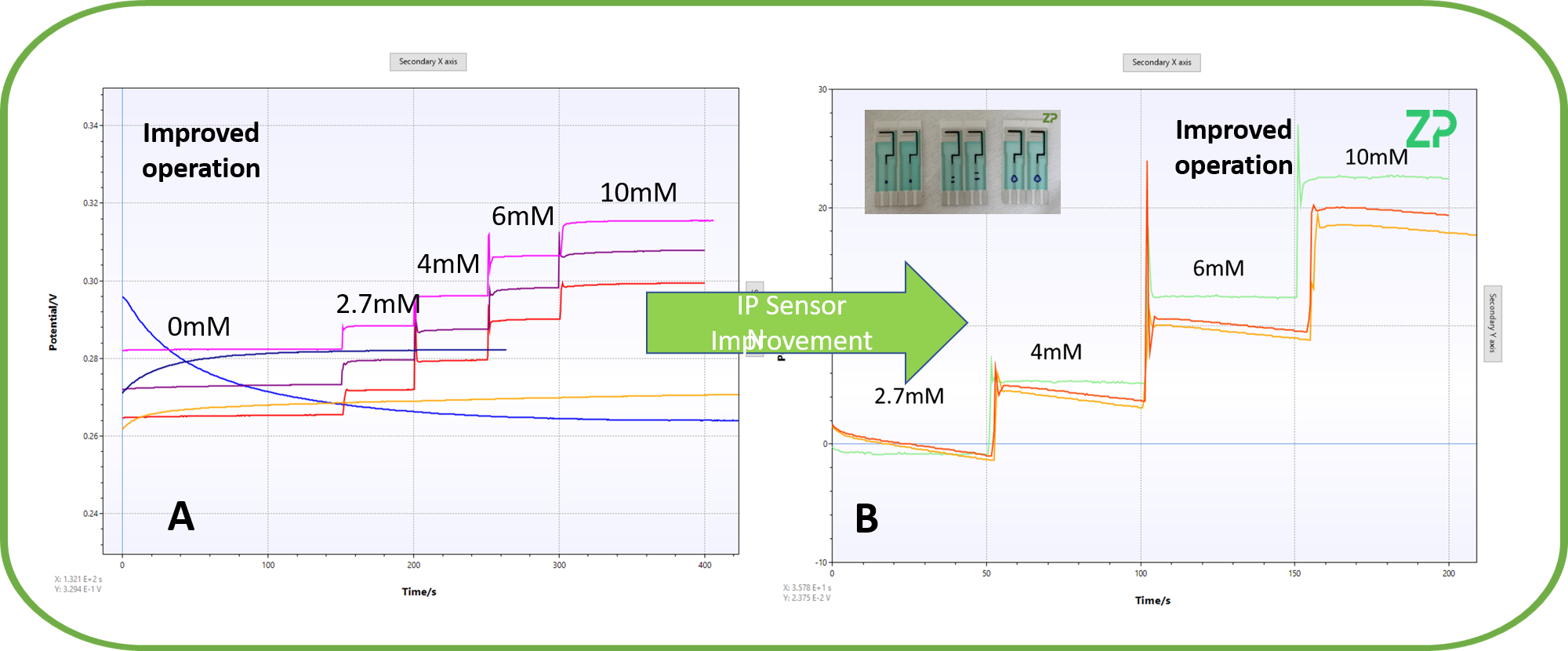At Zimmer and Peacock we are never satisfied, and we are continuously improving our sensors, systems and technologies.
In this note we describe the outcome of a piece of Intellectual Property (IP) that ZP has recently developed; in this note we describe its application to a ZP potassium ion-selective electrode (ISE), though the technology can be applied to anyone of ZP’s other ISEs including: pH, sodium, potassium, ammonium, chloride and calcium.
In the adjacent image we show the data from our potassium sensor without the application of our new IP, what you will notice in this traditional data set that these sensors have the following features:
- NON-LINEARITY – Non-linearity from 0 to 7 mM, and that above 7 mM we show a dramatic decrease in response to the potassium concentration.
- VARIABILITY – The three sensors have similar sensitivity, but there is a variable baseline between each sensors. The issue is that the variable baseline is on a similar scale to the signals themselves, so in some applications this can make the sensors hard to use with an unknown concentration, unless a calibration of the sensor takes place immediately before the reading.
- STABILITY/DRIFT – Depending on the use scenario drift may or may not be an issue, but looking at the data one can see a slight drift in the data.
- WETTING TIME – Though not a huge effect one can see in the period 0 to 50 seconds, there is an initial drift whilst the sensors are wetted/reaches equilibrium.
As stated above ZP continues to work on our sensors and so in the last figure on this page we show potassium sensors manufactured at ZP, but where we have applied our newly developed IP to our potassium sensors, the result is an improved sensor operation.
The improvement in the sensors’ performance are not due to an improvement in manufacturing but rather an improvement in signalling; the benefits on applying ZP’s new IP are:
- NON-LINEARITY – If you look at the data you can see we are testing up to 10 mM of potassium and there is no loss in sensitivity, i.e. the sensor can easily be used from 0 mM to greater than 10 mM.
- VARIABILITY – If you look at the adjacent figure B you see that we have reduced the variability considerable between sensors.
- STABILITY/DRIFT – If we look at figure A, we can see that the data is highly stable.
- WETTING TIME – The wetting time is reduced to some seconds.
Please if you have any questions don’t hesitate to contact us.



